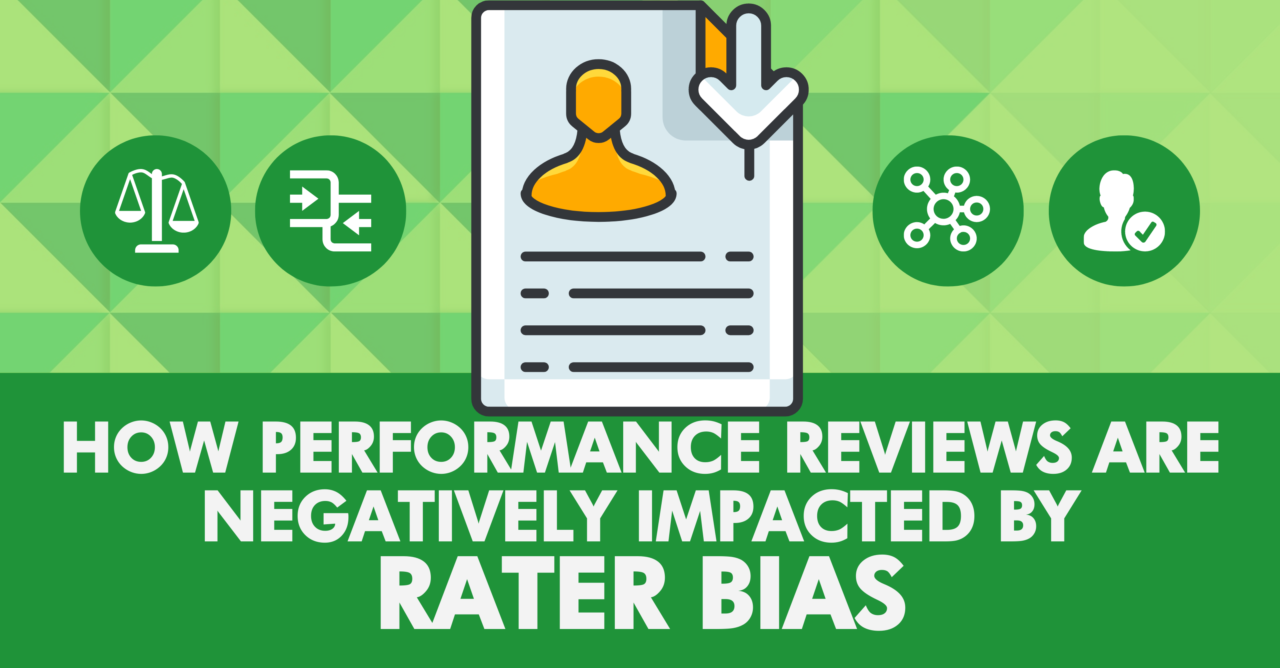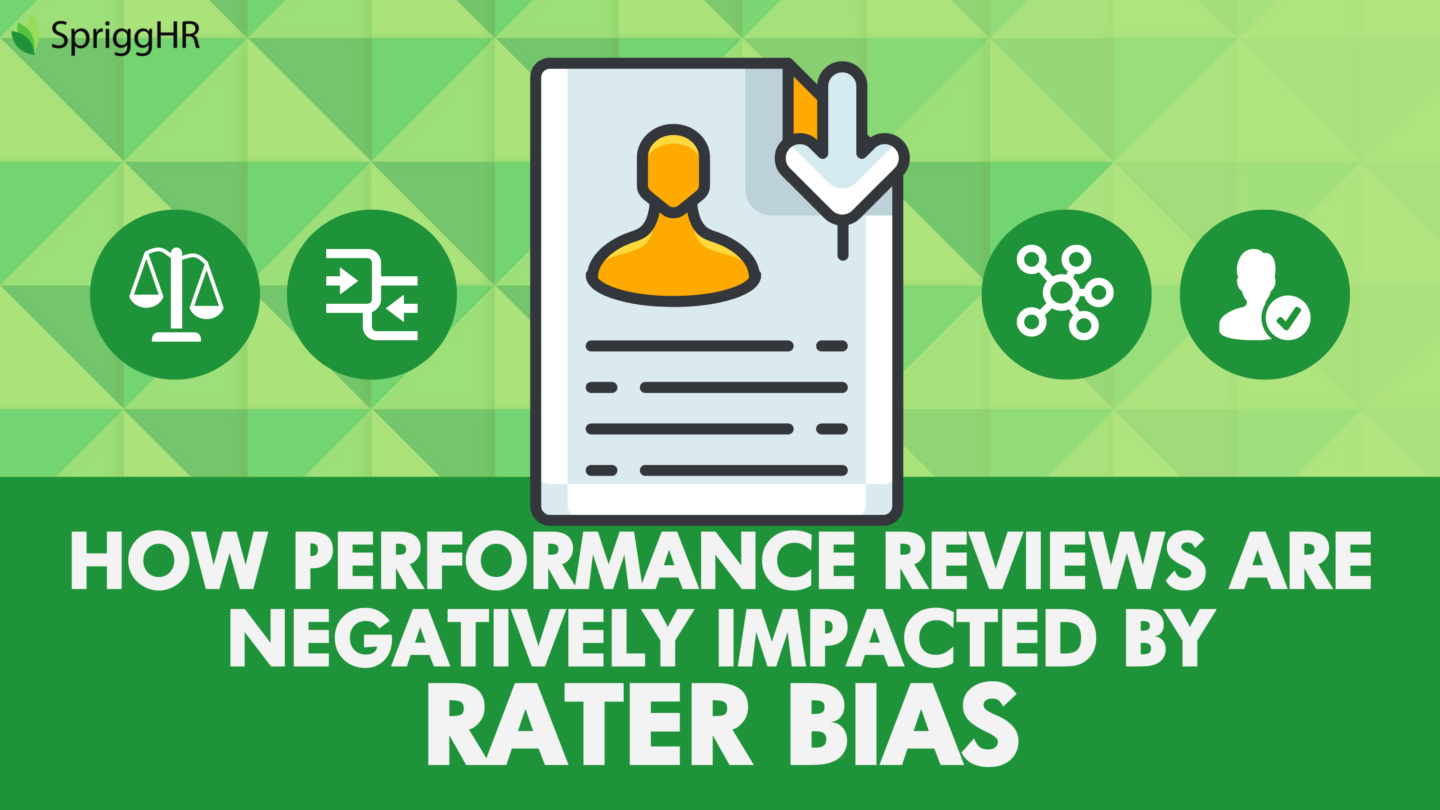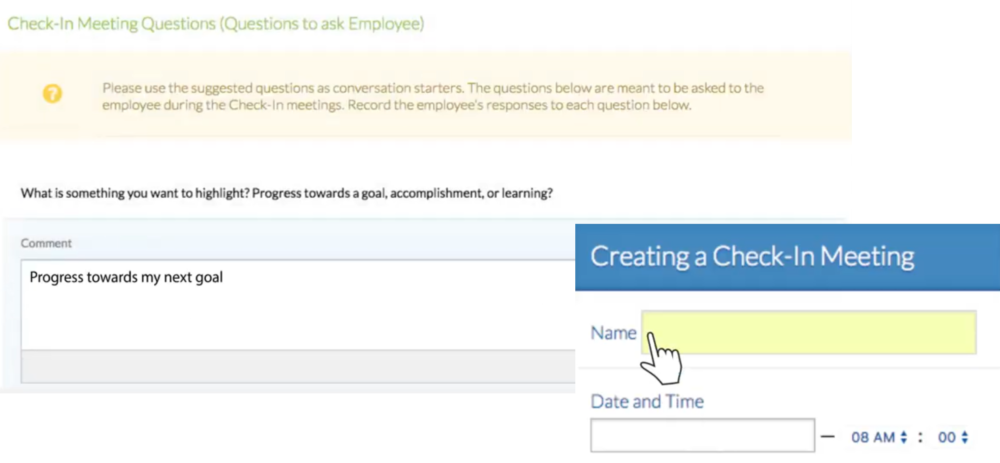
How Rater Bias Negatively Impacts Performance Reviews
Employee performance evaluations can be a challenging task for many leaders. When the proper assessment tools are not in place, it can be challenging to measure using a strategy utilized by millions of companies, which is the performance rating. While there may be ease of determining employee, abilities based on feedback from supervisors, subordinates, and peers, the process of rating others is almost always negatively influenced by rater bias.
Rater Bias & Performance Reviews
Rater bias refers to an error in judgment that can occur when an individual allows their pre-existing biases to affect the evaluation of another. This is a common issue when it comes to employee performance reviews and is a hazard of any rating system that is difficult to eliminate but not impossible to manage.
The error of rater biases can be a result of personal opinions or perspectives, and are almost always unreasonable and stereotypes, though they vary from individual to individual. These biases can skew employee ratings too high or too low, negatively impacting the accuracy of performance reviews and nullifying their validity. When we fail to consider rater biases during performance reviews, it makes obtaining a true estimate of employee performance very challenging.
Types of Rater Bias
Humans are fallible, and biases can also be an outcome of an unconscious mind. Rater Biases pervade in our nature and exist in all organizations no matter their size. Though unhealthy, it is a reality of any performance management system. Because of this, it is crucial for Human Resource professionals to have a strong understanding of the different rater biases that exist. Understanding them thoroughly can prevent decision-making errors, which ultimately strengthens a company’s ability to use performance ratings to its full potential.
The Leniency and Severity Effect
The leniency bias involves a rater being too lenient on the person they are rating. The employee is rated positively irrespective of their performance, which means all scores are very high, making it challenging to recognize an employee’s true pattern of strengths and weaknesses.
The severity bias, the manager is too rigid while rating employees, increasing the chances of employees receiving low ratings even if they perform well and show improvement. This creates an unfairly negative representation of the person being rated and can have serious implications for employees and for HR decision making.
The Central Tendency Bias
In this bias, the manager gives an average rating to all employees, irrespective of their past or present performance. This usually happens when a manager is lethargic, and instead of reviewing each individual employee, they give similar ratings to all. A rating of “3” on a 5-point scale for every question is a clear example of central tendency bias. In this case, good performers suffer, and poor performers are granted an undue advantage.
The Halo and Horns Effect
These biases address the phenomena where a manager tends to generalize their ratings of an employee based on specific positive or negative events.
The halo effect refers to the tendency for a single positive rating to cause raters to inflate all other ratings. Positive ratings across the board aren’t helpful when making decisions, so it is crucial to watch carefully for evidence of the halo effect in employee rating data.
The horn effect is the opposite. It is the tendency for a single negative attribute to cause raters to deflate the ratings in all areas by ignoring the employee’s recent performance. Like the halo effect, the horns effect makes decision-making challenging and might lead to unfair sanctions or inappropriate employee dismissal. There are legal ramifications for such assessments also.

The Recency Bias
Performance reviews are often made with a particular time frame in mind. This could mean a focus on the last quarter, or the past fiscal year. The recency bias occurs when a recent event clouds memory of previous performance. In this case, the manager overlooks the overall performance of an employee and judges them instead based on their recent performance. The recency bias leads to overestimates if the employee has recently performed exceptionally well, or underestimates if they have recently performed poorly despite past success.
The Affinity Bias
People are prone to favor someone who is like them. Typically, men rate men higher than women, women rate women higher than men. Older employees rate their contemporaries higher than younger employees, and so on. Similarity in age, gender, race, and experience all affect ratings. The affinity bias refers to this effect, where the rater tends to give higher ratings to employees with whom they share certain similarities in terms of age, gender, attitudes, perception, education background, experiences, hometown, even similar work habits. This can lead to unjust inflated ratings, and unfair low ratings.
The Alienation Bias
This bias refers to the opposite of the affinity bias. As the name suggests, this bias occurs when the rater alienates an employee with whom they may not have anything in common. This is evidently unreasonable, since performance should always be the principal factor of consideration while reviewing employees.
The Comparative Bias
In this effect, the rater makes comparisons among all employees in the organization, instead of reviewing individual performance. While comparisons can be helpful in moderation when making ratings, reliance upon them can lead to overestimates or underestimates of a person’s abilities. For example, one employee may be extremely organized, but slightly less organized compared to another co-worker. Their boss might then rate that employee lower than they deserve, because they can’t help comparing them to their more organized co-worker.
The First Impression Error
In this bias, the rater forms a premature opinion about an employee, and conducts their performance review based on that first impression. The premature opinion may be positive or negative, but the rater judges the employee in the future review period based solely on that opinion, rather than by evaluation their performance over time.
Situational Bias
In this bias, the rater inflates or deflates the ratings of an employee based on factors that are beyond the employee’s own control.
Dispositional Bias
Dispositional bias refers to cases where the rater seeks opinions from the supervisors of the employee, rather than personally reviewing the employee’s performance for themselves. This leads to inaccuracies in their performance review, due to the inherent distilling of information that occurs in this process.

How to Overcome Rater Bias
Measuring and monitoring employee performance is crucial to any employee and ultimately, the organization’s success. In order to promote continuance, but to reduce the potential for rater bias to occur, try using some of the following tactics.
Written Records
Raters should resort to document trails in order to accurately assess the overall performance of employees. By referring to a written record that tracks their performance on a weekly basis, raters will be able to accurately judge employee performance over a period. An example could be notes taken by the manager after each weekly, 1:1 meeting, where they jot down the state of the performance of each individual employee in a brief manner.
Humans are bound to make errors, especially in the evaluation of other individuals. Proper documentation and a clear, written outline of progress help to avoid such biases by providing a clear picture of their overall performance which will ultimately make preparing the review a fair and equitable exercise (not to mention much simpler to complete).
Continuous Feedback
An open Feedback forum can be designed and made accessible to all members of an organization, or utilization of a “Continuous Feedback” online software like the one offered by Sprigg will help raters to receive feedback from all positions, making performance reviews dimensional and not limited to an individual’s perspective.
Clear Goals Definition
Top management should aim to clearly define the goals and targets for all individual departments and be able to break down those expectations to everyone. The goals should be communicated to all individuals in an organization, ensuring each one fully understands the requirements of the task. Managers should also communicate the performance evaluation process of each employee, so all employees have a thorough understanding of their individual contribution towards the company goals and the process of evaluating their success in those goals.
The Role of the Moderator
Top management often acts as a moderator in the performance review process. It is their responsibility to contribute to the oversight of employee appraisals, acting as an outside perspective that can catch any imbalance or rater bias that is occurring in the process.
The Role of HR
Human Resources should act as a support system for employees during the employee appraisal process. HR should ensure that all the problems and concerns of employees are addressed as soon as possible and should initiate healthy employee-employer relationships. This could mean the implementation of the weekly 1:1 meeting process, offering tools and format for promoting regular discussions. It could also take the form of organizing team effectiveness events that encourage a friendly and productive work environment built on healthy collaboration. They should also ensure top managers are not too rigid or too lenient while dealing with employees by offering coaching or review practice sessions for leaders.
Work Culture
Top management should always aim to maintain a culture of trust in their organization. Members of a team tend to mimic those of their leaders, so ensuring that favoritism and rater bias are eliminated is necessary to ensure equal employee treatment is promoted and practices. Top performers in the company should be recognized and rewarded, and the low performers should be given the necessary training and tools or at minimum, the opportunity to improve so that all employees can experience fairness and equity in the treatment of their performance assessment.

Final Thoughts
Rater bias can skew performance reviews either negatively or positively, regardless of an employee’s actual performance. While an employee can control how they perform their job, they have no control over a rater’s bias against them.
Rater bias is, unfortunately, inevitable and can never be completed eliminated. However, raters can be taught to be consciously mindful when conducting performance reviews. Each time a rater assesses an employee’s performance, they should regularly ask themselves why they are choosing to rate them the way they are. This allows for the rater to be continuously conscious of whether their ratings are in fact motivated by unintentional bias and can ensure fair and just ratings are provided to each individual employee. A very effective strategy is to provide a specific example with details of a given situation. This can provide a fair and valid perspective when conveying either positive or constructive feedback.





